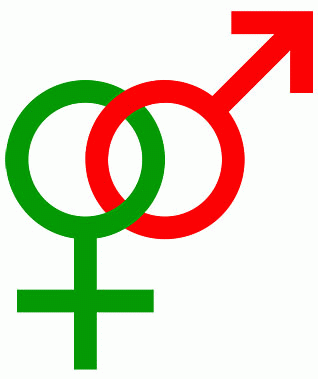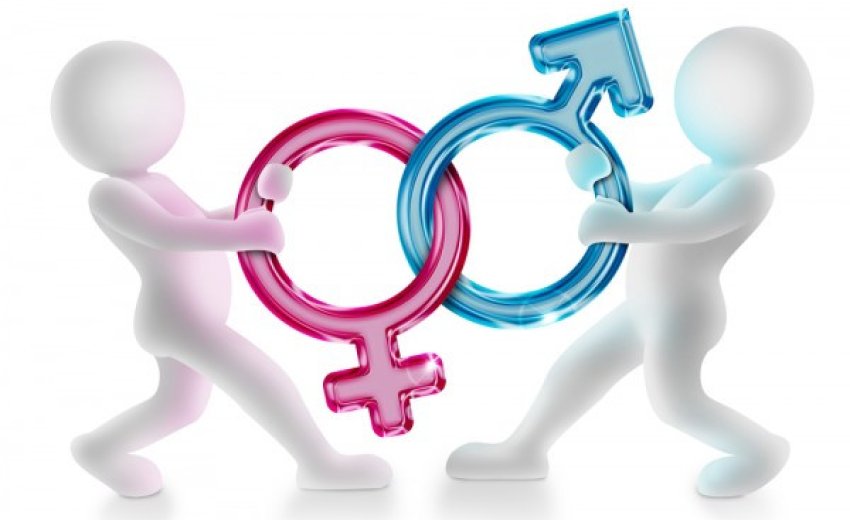 We are both well aware of the fundamentals of Sikh teaching that reiterate equality for men and women, and so forth. That's not where this essay begins.
We are both well aware of the fundamentals of Sikh teaching that reiterate equality for men and women, and so forth. That's not where this essay begins.
We were passing the time talking about this and that, and about March 8 that was commemorated over the world as "Women's Day", when our thoughts turned to how young Sikhs view their mates these days.
Naturally, for starters, we went on to peruse the "Matrimonials" in the ethnic press, and also talked to a few young Sikhs of both sexes.
What flabbergasted us was how many young men look for "China dolls," and how many young women, otherwise dedicated Sikhs, opt for the "clean-shaven" look. Sometimes they even hunt for a "clean-shaven gursikh". Admittedly, there are very few ads that are quite so moronic, but to us it remains a classic oxymoron, like labelling someone a God-fearing atheist.
It seems that many young Sikh keshadhari males feel undesired and rejected, by their Sikh women counterparts. Not a desirable place to be for a growing young man, we thought.
Equally disturbing is the other side of the spectrum. "Saabat soorat" gursikh women (especially the ones that don a dastaar) have trouble finding matches, although they are not so vocal about it and don't often publicly decry Sikh men's craving for Bollywood models or look-alikes for their wives.
In this litany of how skewed is our thinking in such matters, one must add the undeniable fact that in our culture, for a woman the probability of finding a spouse, if she is divorced or has a child, is infinitesimally small.
Go to any function in any gurdwara and there is no way to escape the continual hum of conversation that permeates the assemblage, men and women, but largely emanates from the women.
This kind of rumination brought us to the question: what exactly is the place of the mother in a family beyond carrying the fetus for the necessary gestational period? What is the meaning of responsible parenting?
For a baby, we would think it takes more than keeping one end full and the other end dry, and as the baby grows, it means more than providing the right sex- and age- specific toys - from a Barbie doll or an iPod to a BMW.
We were intrigued by the Jewish maxim that any child born of a Jewish mother is by definition a Jew, irrespective of the father's religious affiliation, or the circumstances in which the child was conceived or born. (This is not the position in all of Judaic thought. For the Orthodox, marrying outside their tradition is not accepted and may result in shunning by the community.)
The idea of matrilineal transmission of Jewish faith most likely emerged from the never easy and contentious existence of the Jews. In their history of long-standing persecution, fatherhood was not always clearly established, and the child unquestionably remained a mother's responsibility.
This is vital particularly in view of the fact that some Orthodox Jewish religious practices are heavily loaded in favour of patriarchy. For example, remember that a minyan (quorum required to conduct a communal religious service) consists of ten men; nine men and one woman would not do.
Keep in mind also that, in some Jewish practices, a woman undergoes a ritual purification every month after her menstrual period, and may not attend religious services during that time.
[We need to add that mainstream Judaism accepts women as full partners without any of these caveats.]
Yet, the belief that the mother is the primary element in defining the faith of a newborn is recognition of her central place. Why? Because, since the dawn of our existence, men have often been somewhat absentee fathers, even if it was only as hunters-gatherers. The human newborn is entirely helpless at birth and dependent on the mother for survival.
Even though not universally accepted in Jewish belief and practice, the dictum that a Jewish woman's child is a Jew recognizes the pivotal place of the mother in the life of a child. It says that even if a Jewish woman marries outside her faith, or the child is of uncertain paternity, she is duty-bound to raise it as a Jew. In fact, the non-Jewish parent then is adding to the richness of the gene pool of the Jewish people. Furthermore, this attitude doesn't isolate the Jewish people from their neighbours of other faiths.
The Sikhs, as we see it, have evolved a very confusing set of parameters in the matter of raising a child. Whereas the responsibilities of a Sikh mother in raising a Gursikh child are critically noticed, her rights are invariably diminished.
In spite of the undeniably equal place that our doctrine provides women, our culture has always been an extreme patriarchy. Perhaps the reasons were socioeconomic, in a community that was largely agrarian until only a generation or two ago.
To a farming people, as many Sikhs still are, landholdings are the key to survival and prosperity. Thus, practices developed to reject alliances and cultural models wherein familial land would get divided over generations. Progressively smaller holdings guaranteed a downward economic spiral.
So a culture evolved in which the bride married into the family of the groom, and automatically adopted the new lifestyle, even the religion of the groom. Often she was also renamed by the groom and his family. She was given a reasonable dowry at marriage by her parents and, in turn, relinquished any claims to family property or land thereafter.
It was as if at marriage a bride sundered all ties to her birth family. This model remains operational even today, even though it is now considerably strained and attenuated.
In this simplified narrative, the bride's existence, though extremely busy in her new joint-family, was considerably simplified. If her husband and his family were good Sikhs, she adopted good Sikh practices; if they practiced a mixed lifestyle, so did she and her children.
In this male-dominated Sikh existence, women developed few independent voices; consequently, we have written women out of our historical narrative and religious practices. We point to the fact that women are not allowed to perform kirtan at the premier Sikh historical gurdwaras, including the Harmandar Sahib at Amritsar.
They are only fleetingly and minimally mentioned in history. Their voices are rarely if ever heard in matters of gurdwara management, pretty much anywhere in the world. They are visible in gurdwaras as silent (even distracting) spectators or busy preparing the langar, never as equal partners.
We illustrate our concerns by two telling examples.
Many erudite writers insist that there were no women at the dramatic Vaisakhi of 1699 where the Khalsa identity was forged. On the other hand, we doubt that the crowd of 80,000 at that time was largely or entirely devoid of women.
Two professors of Sikh Studies have argued that the Sikh Code of Conduct (Rehat Maryada) is not applicable to women, and they may cut their hair.
We think that the Rehat Maryada seems silent or ambiguous on the place of women because of the cultural realities from which we have not yet emerged. There is no logical or sensible reason for such selective myopia in interpreting Sikh doctrine or teaching.
Also, over the past fifty years, Bollywood has increasingly come to define our social existence and cultural norms. If Sikh men lust for China dolls, the women, too, look at clean-shaven hunks as their ideal beaus.
Remember that we are perhaps the last of the generation of Sikhs who learned the rudiments of Sikhism by listening to the parables of Sikhi from our mothers and grandmothers.
Now, as the world turns, times are a-changing. Women are increasingly finding a fulfilling and progressively equal place and powerful voice in secular society, but not in Sikh institutions or religious practices. The Sikh ethos remains defined in the time-honoured cultural mindset and argot that denies a woman's identity, quite contrary to all the doctrinal teaching and its spiritual import.
Over the years, we have known many Sikh families where only one parent - either the mother or the father, but not both - was deeply attached to Sikhi. It seems that the probability of the children remaining connected to Sikhi is greater when it is the mother rather than the father who alone has such ties that can be passed on to the next generation.
We Sikhs, by our cultural and tribal mores, don't even see the symbolism in the Jewish act of claiming as a Jew every child born to a Jewish woman.
The result: We have brought forth a generation of Sikh men and women who have a vague and ill-defined connection to Sikhi, and conflicting ideas of what it means to be a Sikh.
We have diminished and ignored what it means to be a Sikh wife and mother.
By participating in large-scale female foeticide, we have attempted to eliminate Sikh daughters.
By forcing arranged marriages on to the ones that survive, we repress their sense of self and spiritual relationship with the Guru that they should carry forth to their children.
By engaging in honour killings, we try to terrify the rest of them into submission and slavery or else...
One or more of these practices take place in scattered pockets of the community even though they are unequivocally prohibited by Sikh doctrine.
Where, then, are we going to find Sikh women of the next generation?
We happily add a postscript.
There are some spirited souls who are carving a new niche as liberated Gursikh women of the 21st century, but largely outside the ambit of our gurdwaras. You see them as film producers, writers, youth camp organizers, artists and even human rights activists. They seem to be creating the impetus of a new enlightenment and the power of feminine liberation.
To us the moral is clear:
Rights and responsibilities must coexist. A house divided ... or at war within ... cannot stand.
